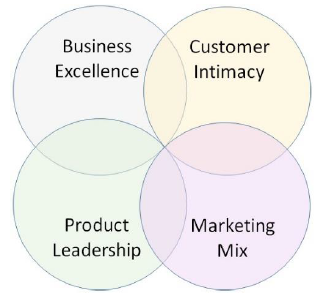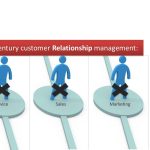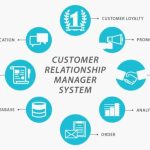“Your relationship with the customers, not the customer’s relationship with your product, is the conduit through which the value flows.”
− Bill Quiseng, Customer Service Speaker and Blogger
The terms cost and value are often misunderstood as same, though these two terms are poles apart in their meaning. The cost of a product is nothing but the amount a customer pays to the seller to avail the product. When the customer says a product is “value for money”, it means the product delivers what it is supposed to in the exchange of a reasonable cost.
What is Value?
The value of a product or a service is nothing but the customer’s perception of the ratio of benefits received to the sacrifices made while purchasing a product or service from a business.
Value = Benefits / Sacrifices
Value is directly affected by customer’s perception, which can be altered positively by increasing benefits and decreasing sacrifices.
Customer’s Sacrifices
The customers make the following sacrifices when it comes to buying from a business −
Time
This is the time taken to physically arrive at the business outlet or to search for the required product online, and to compare various similar products with respect to specifications and costs. It also includes waiting time to avail the required product and extended time when a business delivers a product with incorrect specification.
Money
It is the primary concern. Apart from the cost of product or services the business offers, it may be the cost of Value Addition Tax (VAT), surcharge, interest on the late payments, etc. Similarly, there can be discounts for first few customers or under any other schemes.
Energy
The customers invest energy to get ready, step out for shopping, to drive or to travel from home to the business outlet. The energy also includes fuel consumption for transport.
Emotional Costs
Purchasing a product can be a very hectic, frustrating, and at times annoying experience for the customers. Right from planning what and when to purchase, budgeting, getting ready and stepping out of the house for shopping, being through the crowd on the road, arriving at the store, dealing with the business staff who don’t possess adequate knowledge of the product or schemes, paying exaggerated prices, carrying heavy packages, exchanging faulty or outdated products, etc. At times the customers need to travel in bad weather only to find out that the last piece of the required product was just picked by some other customer.
While buying the product, the customer has to deal with various risks such as financial (regarding product price), physical (possibility of the product turning harmful to customer’s body), and performance (possibility of the product failure).
Sources of Value
There are various sources of creating value for the products the customer purchases −
Value through Operational Excellence
It involves the following −
● Being innovative in product design.
● Following rigorous quality while manufacturing.
● Keeping a golden mean of price and quality.
● Handling efficient supply chains.
● Cooperating closely among suppliers.
● Satisfying customers’ expectations.

Value through Product Leadership
It involves the engagement of the business in continuous product innovation for improvement, large share of investment in product research and development along with the risk. The business creates value by providing the best quality product or service solution in adequate time.
Value through Customer Intimacy
Customer intimacy is generated and developed by understanding customer requirements, offering customized products, creating best outlet ambience, the warmth and interest of business staff while communicating with customers, and putting the customer first.
Value through Marketing Mix
The marketing force of a business combines various components of marketing mix (Product, Price, Place, and Promotion) together to create the best value for the customer. In case of services, as they are intangible unlike products, three more components are considered namely process, physical evidence, and people.
The marketing mix is planned such that is strikes a good balance among customer and business entities, to satisfy the both.


